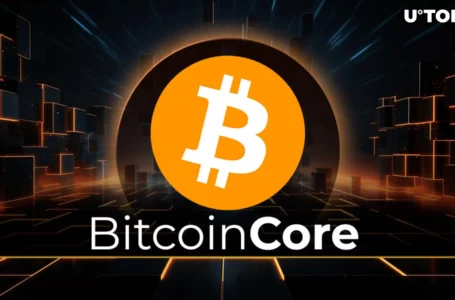
Clover Finance (CLV) is a blockchain infrastructure provider designed to provide more interoperability between the Polkadot and Ethereum networks. The protocol introduces some proprietary features that make it unique including multi-chain developer tools and full DeFi capabilities. As such, the network continues to see growing adoption.
History of Clover Finance (CLV)
The world got introduced to the Clover Finance (CLV) in May 2020. A year later in July 2021, the platform officially launched its mainnet. Clover Finance was co-founded by Viven Kirby, Norelle Ng, and Burak Keçeli. Notably, the network secures $38 million during its Coinlist token sale.
What Problems Does Clover Finance (CLV) Solve?
Clover Finance (CLV) solves one of the biggest issues facing Ethereum and Polkadot users, a lack of interoperability. Ethereum is by far the largest DeFi ecosystem in the world. However, the network is a second-generation blockchain that suffers from scalability issues.
Network congestion increases the gas fees for Ethereum users. Consequently, the recent explosion of the DeFi and NFT (non-fungible token) sectors has resulted in record high fees for users. These fees have sent developers and users in search of more cost-efficient alternatives. One network that has seen a lot of potential as another option is Polkadot.
Polkadot is faster than Ethereum due to its technical structure. However, the Polkadot DeFi ecosystem is much smaller than Ethereum. By allowing these networks to communicate data freely, the problem of interoperability and scalability can be resolved. Developers can use each network for its strongest qualities. For example, imagine a Dapp that leverages Ethereum’s security with Polkadot’s scalability.
Benefits of Clover Finance (CLV)
Clover Finance provides a lot of benefits to the market. The developers took great care to simplify the onboarding process for both users and developers. For example, the network is 100% EVM compatible. The network’s compatible framework for Substrate based applications streamlines the migration of existing Dapps from Ethereum to Polkadot.
Gas Fee
Clover Finance (CLV) introduces a new fee structure to the market. The network has an identity-based gas fee schedule. Those who participate in the network more, and handle more transactions, pay fewer fees. This strategy incentivizes users and helps build value in the CLV token. Additionally, the system integrates a fee relay system. This protocol enables you to pay fees on behalf of other addresses. Notably, a portion of these fees gets distributed to the network nodes maintaining the blockchain with the rest going towards Dapp developers building applications that can expand the reach of the network.
Secure
Security was a main priority for the development team. They integrated enterprise-level protections to protect users and data from hackers. For example, end-to-end secure communication is used in all network functions. This includes functions such as when signers notarize Polkadot block headers or when they act as witnesses for Ethereum VM instances.
Staking
Users can stake their CLV and help secure the network. There are two ways you can participate in the staking features and earn rewards. You can stake tokens and nominate yourself to be a node validator. You can also nominate other nodes for the position. The more tokens you stake and the higher your reward payouts.
How Does Clover Finance (CLV) Work?
Clover Finance (CLV) is able to bridge these two networks due to its multi-layered and decentralized structure. This design enables the platform to operate in a trustless manner, free of human intervention and centralized governance. These are the four layers that lay the foundation for the network.
- Storage Layer: The first layer of the network is the storage layer. Here is where vital information such as transaction data and the state of the network resides. Nodes interact with this data to complete network tasks.
- Smart Contract Layer: The Smart Contract layer is where developers can create and test their protocols. Placing the smart contracts on this layer lowers the overall cost of executing these codes. Notably, users need CLV to deploy smart contracts and Dapps on Clover.
- DeFi Protocol Layer: The DeFi Protocol layer enables developers to provide advanced DeFi features in their works. DeFi is one of the fastest-growing sectors in the crypto market. Features such as staking and farming provide a low-risk way for new users to secure rewards.
- External Dapp Layer: The External Dapp Layer is a game-changer. The developers separate the Dapps to provide more storage and expandability. The main advantage of this approach is that developers can seamlessly deploy their Dapps without using other virtual machines or network bandwidth.
SPV Chain Simulation Technology:
Another core component of the Clover Finance (CLV) network is the SPV Chain Simulation Technology. This mechanism operates as a two-way peg system between blockchains. Specifically, the system utilizes BIP-Schnorr compatible threshold signatures to enable seamless cross-chain communication between networks. It also provides a simplistic way for EVM-based Clover addresses and Polkadot-based Clover addresses to be bound.
Consensus
Clover Finance (CLV) improves scalability and network responsiveness via the use of an advanced Nominated Proof-of-Stake consensus mechanism. This system provides users with the chance to become validator nodes or nominate others. Those who nominate others get a share of the rewards based on the number of tokens staked.
Bottom Line
The expansion of the DeFi sector has led to a strong push for more interoperability in the market. As such, Clover Finance fills a much-needed niche in the market. Combining these two DeFi ecosystems improve liquidity across the entire sector and provides Dapp developers with a world of new opportunities. As such, Clover Finance appears to have a bright future ahead.



















